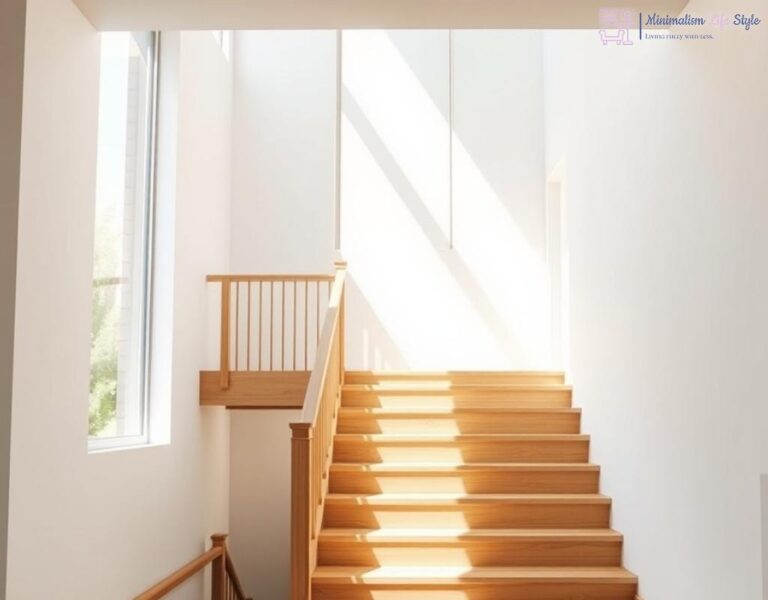Designing Your Dream Craft Corner
Every creative mind knows that the right environment can spark inspiration and productivity. A well-designed craft corner is not just about aesthetics; it’s about functionality and creating a space that resonates with your artistic spirit. Whether you’re a seasoned crafter or a novice looking to explore new hobbies, the design of your craft area can make a world of difference. Let’s dive into the essential elements that will help you create a dream craft corner that reflects your unique style and meets your crafting needs.
When designing your craft corner, think about how each aspect of the space can enhance your crafting experience. From storage solutions to lighting and layout, every detail contributes to an inviting and efficient workspace. Below is a checklist of crucial elements to keep in mind:
- Storage Solutions: Utilize shelves, bins, and pegboards to keep supplies organized and accessible.
- Lighting: Ensure your space is well-lit with natural light or bright, adjustable lamps to reduce eye strain.
- Work Surface: Choose a sturdy table or desk that accommodates your crafting activities comfortably.
- Comfort: Add a cozy chair or cushion for longer crafting sessions.
- Personal Touch: Incorporate decor that inspires you, such as artwork, plants, or photographs.
Once you have determined the key elements, it’s time to visualize your space. Layout plays a critical role in functionality and accessibility. Here are some layout ideas to inspire your design:
| Layout Style | Description |
|---|---|
| Open Concept | Creates a free-flowing space that encourages creativity and collaboration. |
| Corner Nook | Utilizes an underused corner, turning it into a cozy and efficient workspace. |
| Multi-Functional | Combines crafting space with other uses, such as a home office or reading nook. |
| Wall-Mounted | Maximizes floor space by using walls for storage and work surfaces. |
Whichever layout you choose, ensure it allows for easy movement and access to all your crafting materials. Remember, the goal is to create a space where you feel comfortable and inspired to unleash your creativity!
Essential Tools for a Minimalist Craft Space
Creating a minimalist craft area is all about embracing simplicity while maximizing creativity. By carefully selecting essential tools, you can maintain an uncluttered environment that inspires rather than overwhelms. In a minimalist space, less truly can be more; it allows for streamlined crafting experiences where focus and inspiration are at the forefront. Here’s a look at the essential tools that can elevate your crafting game without crowding your serene sanctuary.
In a minimalist craft area, every tool should have a purpose and contribute to your overall creative process. Choosing wisely ensures that you have what you need without excess clutter. Below is a curated list of indispensable tools that fit seamlessly into a minimalistic aesthetic while supporting a variety of crafting projects.
- High-Quality Scissors: A pair of sharp, versatile scissors is a must-have for any crafter. Opt for a compact design that makes them easy to store.
- Multi-Purpose Cutting Mat: Protect your surfaces and create a clean cutting area with a durable cutting mat that can handle various materials.
- Adhesive Tools: Choose a few reliable adhesives, such as glue sticks or double-sided tape, that serve multiple functions without taking up much space.
- Basic Paint Set: A compact set of watercolors or acrylics can add color to your projects without requiring extensive storage.
- Storage Bins: Use stackable bins or boxes to keep your supplies organized and easily accessible, ensuring that everything has a designated spot.
In the world of minimalist crafting, versatility is key. Opt for tools that can serve multiple purposes, allowing you to maximize functionality while maintaining a clean aesthetic. Below are some versatile tools that can help you achieve just that.
- Craft Knife: Perfect for precision cutting, a craft knife can be used for a variety of projects, from paper crafts to model making.
- Stencils and Templates: These can be used for painting, scrapbooking, and more, allowing you to create beautiful designs without the need for multiple tools.
- Digital Tools: Consider using design software or apps for digital crafting projects. They can reduce physical clutter while expanding your creative possibilities.
By focusing on essential tools that are versatile and purposeful, you can curate a minimalist craft space that not only looks good but also enhances your creativity. Remember, the goal is to foster an environment where your imagination thrives, free from distractions and clutter.
Maximizing Storage with Style
Creating a minimal home craft area doesn’t mean sacrificing style for functionality; rather, it’s about embracing both in harmony. When designed thoughtfully, your craft space can become an oasis of inspiration, where every item is not only useful but also adds to the aesthetic appeal. To achieve this balance, consider innovative storage solutions that blend seamlessly into your décor while keeping your supplies organized and easily accessible.
One of the most effective ways to enhance your craft area is by incorporating storage solutions that are both practical and visually appealing. Think outside the box by using decorative baskets, stylish bins, or even vintage crates to store your materials. These elements can serve as unique décor pieces while providing much-needed organization. For instance, a beautiful wicker basket can hold yarn or fabric, adding a touch of warmth to your space. Furthermore, wall-mounted shelves not only save valuable floor space but also allow you to display your favorite materials or finished projects, creating an inspiring backdrop that fuels your creativity.
In your quest for a stylish craft area, consider the importance of multifunctional furniture. A compact worktable with built-in drawers can keep your tools hidden yet within reach, allowing for a clean workspace free from distractions. Additionally, using clear containers for smaller items not only showcases your supplies but also makes it easy to locate exactly what you need. When choosing colors and materials for your storage solutions, opt for a cohesive palette that reflects your personal style, whether it’s rustic chic or modern minimalism. Remember, your craft space should be a reflection of you, where every element works together to create a harmonious environment that inspires your creative endeavors.
Creating an Inspiring Atmosphere
Transforming your craft corner into a space that sparks creativity involves more than just organizing supplies; it’s about crafting an environment that resonates with your artistic soul. Imagine walking into a space that not only serves its functional purpose but also elevates your mood and fuels your imagination. To achieve this, focus on the atmosphere—a blend of colors, textures, and personal touches that harmonize to inspire your creativity.
First and foremost, consider the color scheme of your craft area. The colors you choose can significantly impact your mindset and productivity. Soft pastels can evoke calmness, while vibrant hues can energize your creative spirit. By selecting a color palette that resonates with your personality, you create a backdrop that nurtures your artistic endeavors. Pair these colors with textures that invite touch, such as warm woods, soft fabrics, or shiny metallics. These elements not only enhance visual appeal but also create a tactile experience that can invigorate your crafting process.
Lighting is another essential aspect in shaping an inspiring atmosphere. Natural light is often the most uplifting, so position your crafting area near a window if possible. However, when natural light is scarce, investing in adjustable lamps can help mimic daylight, making your space feel more inviting and reducing eye strain during detailed projects. Incorporate ambient lighting with fairy lights or soft lamps to create a cozy, welcoming vibe. This layered approach to lighting allows you to set the mood according to your crafting needs, whether you’re embarking on an intricate project or simply enjoying a relaxing session of creative flow.
Lastly, don’t underestimate the power of personal elements in your craft corner. Surrounding yourself with items that hold sentimental value or spark joy can create a deeply inspiring atmosphere. This could be anything from framed artwork that you love, inspiring quotes displayed prominently, or even a vision board filled with your aspirations. Incorporating plants can also breathe life into your space, as they not only purify the air but also add a touch of nature that enhances creativity. Remember, your craft area should be a reflection of you—an intimate space that nurtures your creative spirit and encourages you to explore your imagination.
Sustainable Crafting: Eco-Friendly Practices
In an era where environmental awareness is at the forefront of our minds, integrating sustainability into your crafting routine is not just a trend; it’s a responsibility. Crafting can have a significant impact on the environment, but by adopting eco-friendly practices, you can transform your creative space into a haven that honors both your artistic expression and the planet. Let’s explore how to cultivate a sustainable crafting environment that aligns with your minimalist aesthetic while being kind to Mother Earth.
One of the best ways to embark on a sustainable crafting journey is by embracing natural materials. Instead of relying on synthetic products that contribute to waste, consider using biodegradable or renewable resources. For example, organic cotton or linen can replace plastic-based fabrics in your sewing projects, while recycled paper can be sourced for your scrapbooking endeavors. Not only do these materials reduce your carbon footprint, but they also add a unique touch to your creations, often boasting textures and patterns unavailable in mass-produced items. Furthermore, opting for locally sourced materials minimizes transportation emissions, making your crafting experience even more eco-conscious.
Upcycling is the practice of transforming old or discarded items into something new and valuable, and it plays a significant role in sustainable crafting. By repurposing materials, you not only keep them out of landfills but also spark your creativity in unexpected ways. For instance, old glass jars can become stylish storage containers for your craft supplies, while wooden pallets can be transformed into rustic shelving units. The beauty of upcycling lies in its limitless possibilities; almost anything can be reimagined with a bit of ingenuity. This approach not only fosters creativity but also aligns beautifully with a minimalist philosophy, as it encourages you to utilize what you already have rather than seeking out new products.
Incorporating sustainable practices into your craft area doesn’t mean sacrificing style or creativity. By focusing on natural materials and embracing upcycling, you can cultivate a workspace that is both aesthetically pleasing and environmentally friendly. As you make these conscious choices, remember that every small action contributes to a larger movement towards sustainability, ultimately allowing you to craft with purpose and passion.




